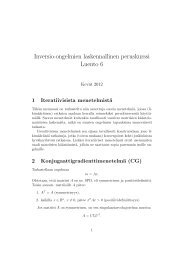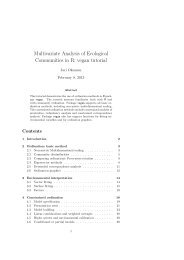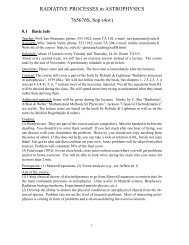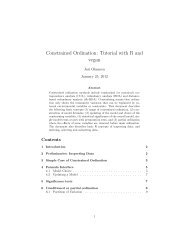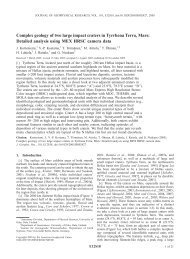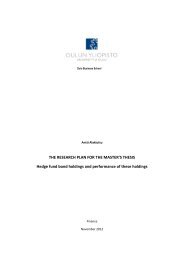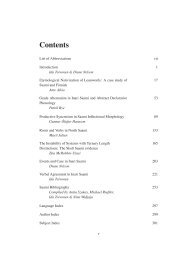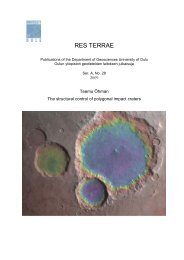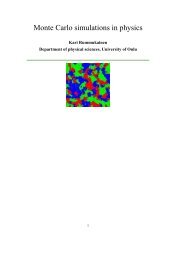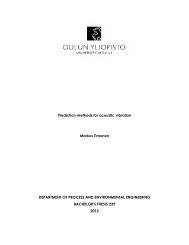Juha Köykkä - Oulu
Juha Köykkä - Oulu
Juha Köykkä - Oulu
- TAGS
- juha
- oulu
- cc.oulu.fi
You also want an ePaper? Increase the reach of your titles
YUMPU automatically turns print PDFs into web optimized ePapers that Google loves.
Res Terrae, Ser. A 32, J. <strong>Köykkä</strong>, Sedimentology of the Mesoproterozoic Telemark basin-fills, South Norway: implications for<br />
sedimentation processes, depositional environments and tectonic evolution<br />
8 km) and the lack of frequently interrupting unconformities favor a simple shear rift<br />
model rather than a pure shear. Estimations of sedimentation rates in the East African<br />
Rift Basin vary from 10 cm/ka to several 100 cm/ka, which could be also the case in<br />
the Rjukan Rift Basin. The sedimentation rates were probably much higher during the<br />
base level drop and the syn-rift phase due to the intensive erosion of the uplifted<br />
flanks. Comparing the Rjukan Rift Basin e.g., to the well-studied Paris Basin, it is<br />
known that the rifting in the Paris Basin lasted for ca. 60 Ma (Allen and Allen, 1990),<br />
which could be the maximum rifting age (or less) of the Rjukan Rift Basin.<br />
It is obvious that the sub-Svinsaga unconformity represents a significant deposi-<br />
tional hiatus and that it marks the boundary of evolution in tectonic regimes. The sub-<br />
Svinsaga unconformity may also record an unusually periglacial paleoclimate, which<br />
was studied in Paper V. The nature of the sub-Svinsaga unconformity varies from an-<br />
gular in the south to more conformable in the north, indicating that the tectonic defor-<br />
mation and evolution was more intensive in different localities.<br />
6.2.2 Early Sveconorwegian strike-slip basin<br />
Based mostly on geochemical studies of the basalts, Brewer et al. (2002) suggested a<br />
continental back-arc setting for the Höydalsmo Group, which is part of the early Sve-<br />
conorwegian units in the Telemark supracrustal rocks (Figs. 4 and 10). The lack of<br />
deep-marine basin-fills and evidence of contemporaneous tectonics argues against this<br />
suggestion. In fact, the abrupt lateral lithofacies variations, coarse-grained alluvial fan<br />
sedimentation, intrabasinal unconformities, bi-modal volcanism, and basin margin<br />
faults strongly suggest a strike-slip influence (cf. Hathaway, 1993; Mueller and Corco-<br />
ran, 1998). However, the sedimentation environments and patterns of the overlying<br />
early Sveconorwegian units are not well known. The evolution possibly contains a se-<br />
dimentary-volcanic transpression or extension stage to a non-volcanic and sedimentary<br />
dominated transtensional stage. Overall, the evolution records sedimentation at ca. 80<br />
Ma in a strike-slip influenced basin generated by the releasing bend of transformal<br />
faults. The preliminary depositional evolution of the early Sveconorwegian units is il-<br />
lustrated in Figure 10. The first strike-slip phase was probably related to transpression<br />
and mantle volcanism, which was followed by a colder transtensional stage that mostly<br />
accumulated only coarse conglomerates and sandstones. The crust was thicker, and the<br />
67



